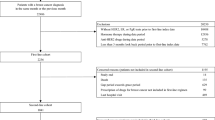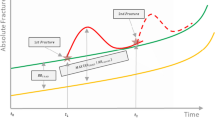Abstract
Introduction: The economic burden of renal cell carcinoma (RCC) came into sharp focus when the UK’s National Institute for Health and Clinical Excellence denied coverage (later reversed) of sunitinib for metastatic RCC. Following an updated review of RCC-related economic studies, we supplemented the costs of RCC reported in the literature with estimates from the latest US databases that capture the utilization of several newly approved targeted agents.
Method: We conducted analyses using the 1991–2007 SEER (Surveillance, Epidemiology and End Results)-Medicare and 1996–2007 MarketScan Commercial Claims and Encounter (CCAE) and Medicare Supplemental databases, and based our estimates on a prevalent cohort of patients with RCC or kidney cancer constructed from each database. All cost estimates were normalized to $US, year 2009 values. The incremental costing approach was applied to estimate the annual cost of RCC by treatment phases using a prevalent cohort of patients with RCC identified from the 2005 SEERMedicare database. We used the method of extended estimation equations to estimate the impact of patients’ use of targeted therapies on the annual costs of RCC, while controlling for confounding factors such as patients’ age, sex, tumour characteristics, co-morbidity and geographic regions. The method was applied to two elderly cohorts of RCC patients identified from the SEER-Medicare and the MarketScan Medicare Supplemental databases and a non-elderly cohort of patients with RCC identified from the Market Scan CCAE database.
Results: Compared with the cost of treating an elderly, non-cancer patient in the matched sample, the average cost of treating an elderly patient with RCC was $US11 169 (95% CI 10683, 11655) more per year, based on our analyses of the latest SEER-Medicare data. The annual cost to treat patients with RCC who received targeted therapies was 3- to 4-fold greater than the cost to treat patients with RCC who received other therapies. Results from the multivariate analysis showed that, after controlling for potential confounders, the annual medical cost was $US31000–65000 higher for RCC patients treated with targeted therapies, with the largest increase observed among the nonelderly patients.
Conclusion: The economic burden of RCC is likely to grow with an increasing use of targeted therapies. Future research is needed to understand the impact of various forces on the economic burden of RCC, such as increased disease incidence, use of minimally invasive surgical techniques and more prevalent adoption of emerging targeted therapies.





Similar content being viewed by others
Notes
Although oral prescription drugs are covered under Medicare Part D, the latest release of SEER-Medicare data has not yet added Part D claims to the data.
References
Shih Y-CT, Chien C-R, Xu Y, et al. Economic burden of renal cell carcinoma. Part I–an updated review. Pharmacoeconomics 2011; 29 (4): 315–29
Wallen EM, Pruthi RS, Joyce GF, et al. Kidney cancer. J Urol 2007 Jun; 177 (6): 2006–18; discussion 18-9
Lang K, Danchenko N, Gondek K, et al. The burden of illness associated with renal cell carcinoma in the United States. Urol Oncol 2007 Sep-Oct; 25 (5): 368–75
Yabroff KR, Davis WW, Lamont EB, et al. Patient time costs associated with cancer care. J Natl Cancer Inst 2007 Jan 3; 99 (1): 14–23
Yabroff KR, Lamont EB, Mariotto A, et al. Cost of care for elderly cancer patients in the United States. J Natl Cancer Inst 2008 May 7; 100 (9): 630–41
Warren JL, Klabunde CN, Schrag D, et al. Overview of the SEER-Medicare data: content, research applications, and generalizability to the United States elderly population. Med Care 2002 Aug; 40 (8 Suppl.): IV-3–18
Medstat. Market Scan Research Databases user guide and database dictionary: multi-state Medicaid database, 1999–2005 edition. Ann Arbor (MI): Medstat, 2007
SEER. Training for the multiple primary and histology coding rules [online]. Available from URL: http://seer.cancer.gov/tools/mphrules/training.html [Accessed 2009 Dec 12]
Brown ML, Riley GF, Schussler N, et al. Estimating health care costs related to cancer treatment from SEER-Medicare data. Med Care 2002 Aug; 40 (8 Suppl.): IV-104–17
Karon JM, Kupper LL. In defense of matching. Am J Epidemiol 1982 Nov; 116 (5): 852–66
Kupper LL, Karon JM, Kleinbaum DG, et al. Matching in epidemiologic studies: validity and efficiency considerations. Biometrics 1981 Jun; 37 (2): 271–91
Barber JA, Thompson SG. Analysis of cost data in randomized trials: an application of the non-parametric bootstrap. Stat Med 2000 Dec 15; 19 (23): 3219–36
Basu A. Extended generalized linear models: simultaneous estimation of flexible link and variance functions. Stata J 2005; 5 (4): 501–16
Basu A, Rathouz PJ. Estimating marginal and incremental effects on health outcomes using flexible link and variance function models. Biostatistics 2005; 6 (1): 93–109
Klabunde CN, Legler JM, Warren JL, et al. A refined comorbidity measurement algorithm for claims-based studies of breast, prostate, colorectal, and lung cancer patients. Ann Epidemiol 2007 Aug; 17 (8): 584–90
Klabunde CN, Potosky AL, Legler JM, et al. Development of a comorbidity index using physician claims data. J Clin Epidemiol 2000 Dec; 53 (12): 1258–67
Duh MS, Dial E, Choueiri TK, et al. Cost implications of IV versus oral anti-angiogenesis therapies in patients with advanced renal cell carcinoma: retrospective claims database analysis. Curr Med Res Opin 2009 Aug; 25 (8): 2081–90
Amato RJ, Shingler W, Naylor S, et al. Vaccination of renal cell cancer patients with modified vaccinia ankara delivering tumor antigen 5T4 (TroVax) administered with interleukin 2: a phase II trial. Clin Cancer Res 2008 Nov 15; 14 (22): 7504–10
Hawkins RE, Macdermott C, Shablak A, et al. Vaccination of patients with metastatic renal cancer with modified vaccinia ankara encoding the tumor antigen 5T4 (TroVax) given alongside interferon-alpha. J Immunother 2009 May; 32 (4): 424–9
Acknowledgements
This research was partially funded by a grant from the Agency for Healthcare Research and Quality (AHRQ, R01 HS018535) to Ya-Chen Tina Shih, and a grant from the China Medical University Hospital, Taiwan (DMR-98-132) and a grant from the Department of Health, Taiwan (DOH99-TD-C-111005) to Chun-Ru Chien. The authors thank Ms LeeAnn Chastain for her editorial contributions. The interpretation and reporting of these data are the responsibilities of the authors and should in no way be viewed as an official policy or interpretation of the AHRQ. This study used the linked SEER-Medicare database. The interpretation and reporting of these data are the sole responsibility of the authors. The authors acknowledge the efforts of the Applied Research Program, National Cancer Institute (NCI); the Office of Research, Development and Information, Centers for Medicare & Medicaid Services (CMS); Information Management Services (IMS), Inc; and the SEER Program tumour registries in the creation of the SEER-Medicare database.
Author information
Authors and Affiliations
Corresponding author
Rights and permissions
About this article
Cite this article
Shih, YC.T., Chien, CR., Xu, Y. et al. Economic Burden of Renal Cell Carcinoma in the US. Pharmacoeconomics 29, 331–341 (2011). https://doi.org/10.2165/11586110-000000000-00000
Published:
Issue Date:
DOI: https://doi.org/10.2165/11586110-000000000-00000




